Most car owners ignore curbs until they cause expensive damage when driving their vehicles on a daily basis. Whether you are walking around town or pulling into your garage, the smoothness and bumps you experience in your car are crucial to your comfort and safety. In this article, we will go over the definition of curbs, the various kinds of curbs and their applications, how they can damage cars, and—above all—what you can do to prevent curb damage to your car.
What Are Curbs
Along the edges of parking lots, carports, and roadways are controls in the shape of raised borders, typically made of asphalt or concrete. Curbs’ primary responsibilities are road maintenance, the construction of conspicuous obstacles for pedestrians and automobiles, and encouraging water flow into canals. Depending on the strategy used, road gutters may pose a genuine risk to cars, or they may be safe.
Types of Curbs & Their Applications
Let’s explore different types of curbing one by one.
-
Barrier Curbs( also named straight curbs, or vertical curbs)
One of the most popular types of curbs utilized in cities is the boundary control, sometimes referred to as the vertical or straight curb. These curb checks, which are typically six to eight inches high, are intended to make it obvious which sidewalks are for pedestrian use and which are for traffic.
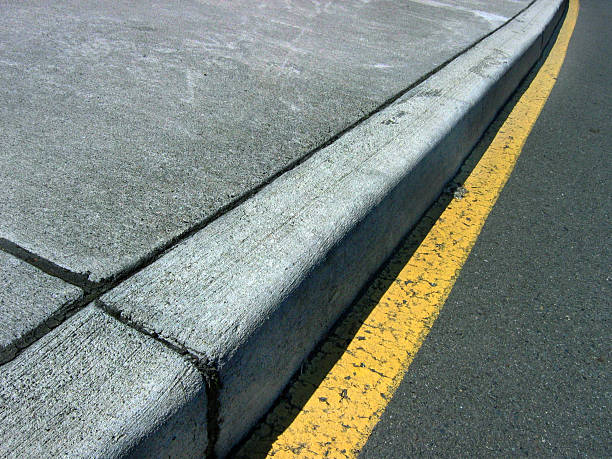
Where They Use
Because they serve as a barrier, keeping cars from accessing the road, they are ideal for delivery zones, busy lanes, and other locations where there needs to be a clear separation. However, cars are at risk because of their rigid, upright structure. An unintentional hit to their tires or wheels could result in damage.
-
Rolled Curbs
A smooth, curving transition from the road to the surrounding landscape is demonstrated by rolling tests. Unlike barriers, they are angled so that cars can pass over them with ease and without any problems.
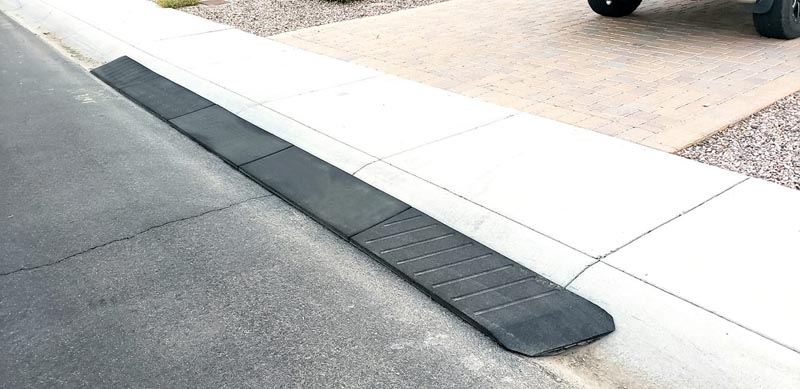
Where They Use
Because cars are usually parked in private garages and in rural areas, this makes them a popular choice. By maintaining the required space between surfaces, rolled inspections help prevent damage to tires and rims.
-
Driveway Lips
The elevated border where a garage meets the street is known as the garage lip, but it is not the kind of curb you might anticipate. These bumps pose a risk to drivers, particularly those driving vehicles with limited ground clearance, as they have the potential to damage the bumper or scratch the bottom.

Where They Use
Garage lips are common in private areas that can benefit from a ramp or other accessibility improvements.
-
Angle Curbs
Because of its sloped front, an angled curb looks like a triangle when you cut through it. These checks provide a balance between management and access by striking a balance between stringent and flexible control.
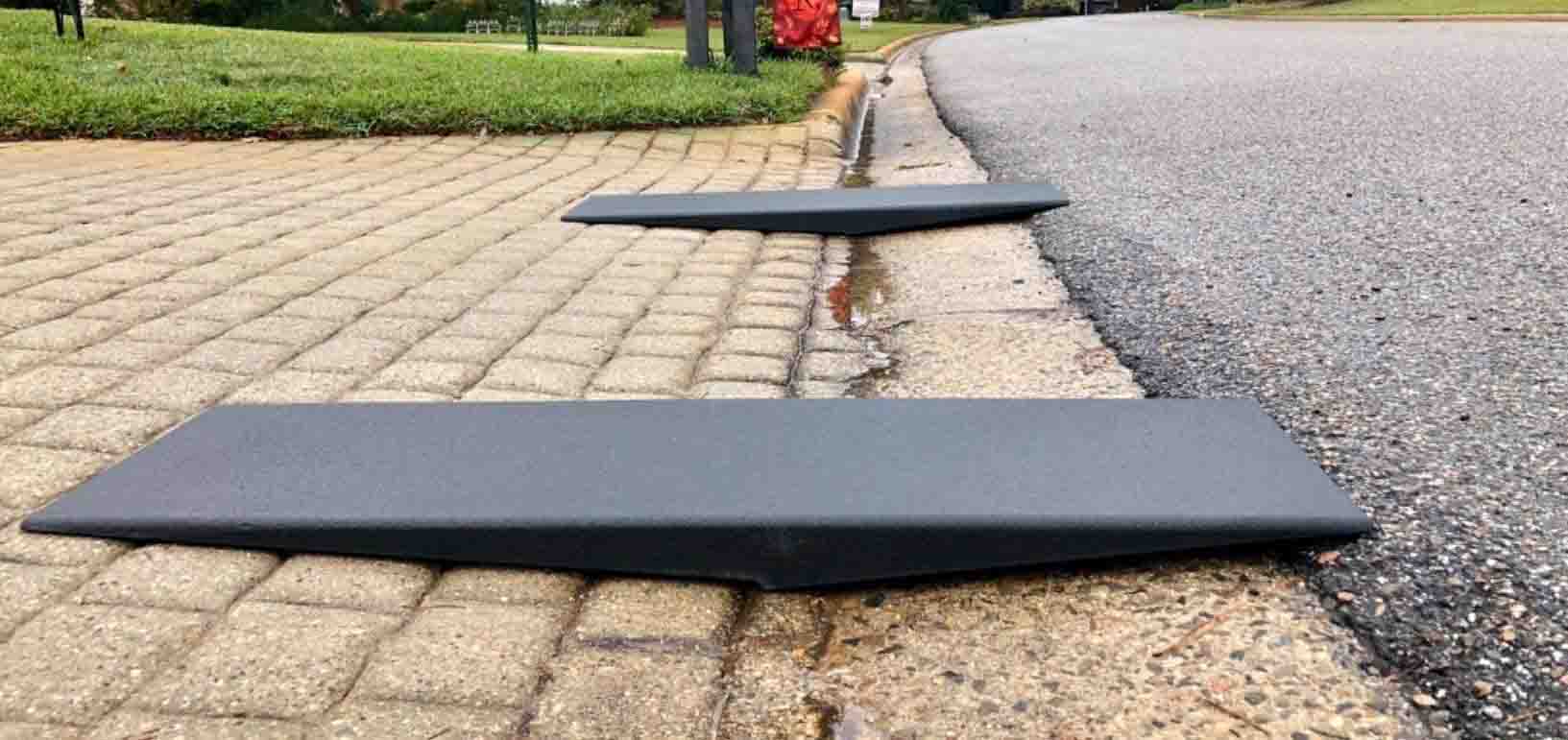
Where They Use
They are frequently observed in public parking lots or on roads where it is important to protect pedestrians while occasionally permitting cars to drive over them. Since cars can safely drive over them, they make sense for locations where a lot of objects are used simultaneously.
-
Driveway Ridges
Driveway ridges are little raised areas at the front of a carport. They are frequently installed to prevent water from entering your home.
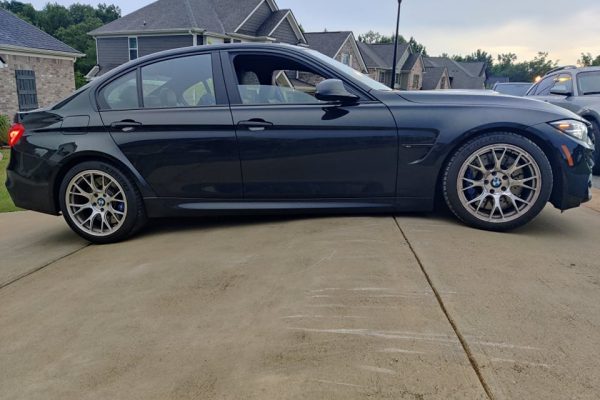
Where They Use
These margins are particularly helpful for directing water on slopes or in areas that are prone to flooding. If they are not constructed with a moderate slope or incline, they can still scrape or harm low-riding vehicles even while they help drain water.
-
Mower Curbs
Careful consideration goes into the design of cutter checks. These checks are flat and have slanted edges, which allow lawnmowers to pass over them.

Where They Use
They are frequently used to keep grass away from roadways or walkways without creating maintenance issues in gardens, parks, and private yards. Their delicate contours present little to no risk of harm in the event that they are inadvertently driven over, even though they are not made for cars.
-
Monolithic/Integral Curbs
Whether required or not, a single, continuous series of examinations is carried out on the nearby sidewalk or pavement. These inspections close gaps and defects by combining the control with the asphalt, resulting in a more robust and durable surface.

Where They Use
They are frequently utilized in hard, manufacturing-like settings where durable, robust materials are required. Because they coexist, they frequently blend in better with their surroundings, even if their outward appearance changes.
-
Mountable Curbs
Curbs that are mounted are designed to be easily accessible. To guarantee the safe passage of automobiles, delivery trucks, and emergency vehicles, the check edges have been meticulously created.
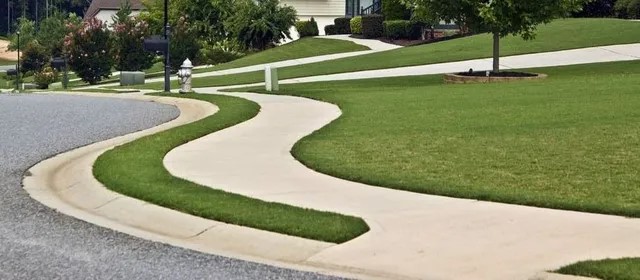
Condition To Use
They are often used in delivery zones, shopping centers, and private garages where adaptability is crucial. Their construction helps prevent damage to the car’s tires, wheels, and bottom.
-
Slanted Curbs
As the name implies, slanted curbs are more severe than standard curbs and feature a steeper angle.
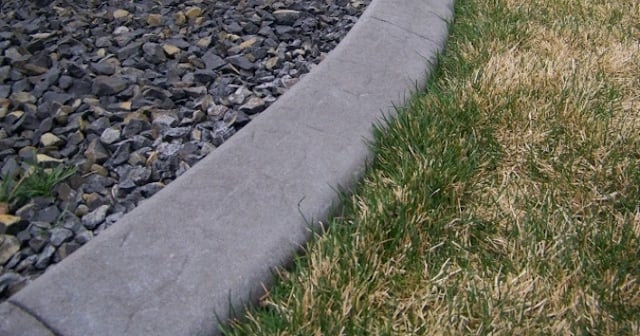
Condition To Use
These are frequently utilized in areas that require a seamless transition between the sidewalk and the street. Vehicles that are low to the ground might be able to cross the angle, but they could still get scraped or damaged. As a result, exercise caution, particularly when driving those cars.
-
Flush curb
It is simple to move between the roadway and the surrounding area because flush curbs are at the same height as the street. To encourage mobility, these curbs are frequently located near crosswalks, wheelchair ramps, or accessible routes.
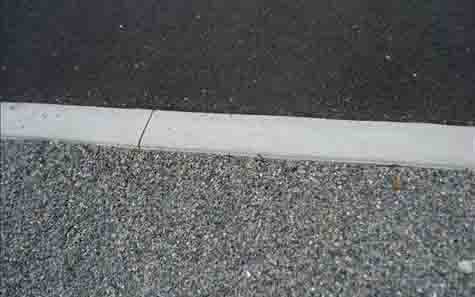
Where They Use
They are essential in places where everyone should have access to them, since they can run over automobiles without causing harm.
FDOT Curb Types: Types D, E, and F
Type D of FDOT
- One of Florida’s most famous waterways and control systems.
- Designed to be used on private driveways and city streets.
- It is perfect for entering a garage because of its mild slope, which facilitates car entry.
Type E of FDOT
- Curb E is distinguished by its upright position and lack of canal inclination, which are commonly observed in locations where trash is needed around the edge.
- It is used primarily in places where people must wander alone.
- It is not the best for a car rollover due to its design.
- It is frequently seen in the middle of roads and near borders.
FDOT Type F Curb
- Curb F has a much higher and more vertical style.
- It is used in crowded situations or locations where the road and sidewalk are clearly marked off from one another.
- Excellent at controlling traffic and guaranteeing pedestrian safety zones.
Which Curb Type Do You Need a Ramp For?
Whether utilized for commercial access centers or residential carports, Jackwin provides sturdy, weatherproof elastic control slopes that offer the ideal fit. FDOT Sort D, E, and F rules are compatible with our specially designed check slope configurations.
- Rolled and vertical curbs
- Driveway lips and transitions
- Uneven pavement edges
Common Vehicle Damage Caused by Curbs
Wheel Rim Damage:
One of the main types of damage brought on by curbs is damage to the wheel rims. If a car hits or brushes against a curb, especially a high one, the metal parts of the wheels may get scraped or twisted. Vehicles with a combination of metal or chrome-covered edges are frequently quite dangerous since they are more likely to sustain visible damage.
If curbs are used continuously, they may develop wear and tear, develop structural problems, or possibly require a complete edge replacement. Broken edges can also affect the wheel’s balance, making for a bumpier and perhaps dangerous ride.
Tire Issues:
The sidewall is especially vulnerable to damage when tires come into contact with objects like curbs or obstacles. A strong impact may cause the tire’s side to bulge, cut, or tear, which could hinder its performance. This might cause a tire to explode while traveling in hazardous conditions, which would be extremely dangerous.
Overuse of the brakes or steering can lead to uneven tire wear, a shorter tire life, and more challenging driving. If you do not check your tires often after hitting anything, you can miss the warning indications of serious damage.
Undercarriage Scrapes:
When low-clearance vehicles cross bumps or sharp edges, such as those on ramps or driveways, they are more susceptible to underbody damage. The lower portion of the vehicle houses vital components such as the suspension, exhaust system, and oil pan.
Upon close inspection, these might be scraped, dented, or otherwise damaged. In the worst cases, striking the underside of the vehicle might result in spills or significant misalignment, which can both require expensive repairs and make it difficult to perform tasks.
Suspension Misalignment:
Although often disregarded, the suspension system is prone to misalignment brought on by repetitive bump hits. Your car’s alignment may change if you hit a bump while driving up a hill or off a curb, which might affect the steering and handling.
Over time, this misalignment may lead to uneven tire wear, decreased fuel efficiency, and increased strain on components such as control arms, shocks, and struts. The suspension may become misaligned if you hit a curb, which could result in an uneven steering wheel or a sideways veer.
Bumper and Body Panel Damage
The front or rear bumper may occasionally make contact with the ground or curb while approaching areas that are wet or when navigating fast turns. This may result in fractures, cringes, scrapes, or damaged boards. Most current bumpers are made of fiberglass or plastic. Despite being lightweight, these materials are brittle. Additionally, cars with large body kits or spoilers are more likely to sustain damage if improperly maintained.
Difference Between Curb and Gutter
A street curb is the raised barrier that delineates the side of a street or driveway, while a road gutter is the sloping channel adjacent to the curb that aids in directing water flow, however, they are commonly used interchangeably. By constructing a system of curbs and gutters, they control water flow and demarcate the road’s boundaries.
Solutions to Protect Vehicles from Curb Damage
1. Use of Driveway Curb Ramps
Particularly in remote areas with steep garage edges, driveway curb ramps are an economical and effective way to shield your vehicle from serious collisions. By forming a gradual rise between the garage and the road, these slopes reduce sudden bumps while entering or exiting the garage.
Automobiles with low ground clearance, such as sports vehicles, electric cars, and sedans, are treated with great consideration. This will lessen the possibility of bumper, suspension, and undercarriage damage. Water channels are often incorporated into the construction of control slopes to ensure proper drainage and compliance with local regulations.
2. Rubber Curb Ramps for Temporary or Portable Use
For temporary or flexible applications, rubber curb ramps are a good substitute. They are simple to install and move around without requiring permanent installation because they are composed of sturdy, weather-resistant elastic. These slopes are ideal locations for events, rental homes, flexible businesses, or locations where it is forbidden to erect permanent signage.
The polished surface helps protect the tires, rims, and body of the vehicle as it passes over potholes or garage edges when driving, especially in rainy conditions. They may be used with a wide range of vehicles, including cars and delivery trucks, because they are available in different sizes and weight restrictions.
3. Customized Curb Design in Urban Planning
By incorporating car-friendly layouts into residential and commercial developments, urban planners and builders can contribute to a decrease in vehicle damage. This implies that low barriers, such as posts or rolled edges, should be used in place of high ones in places where cars frequently need to pass.
Accessibility is increased and hazards are decreased with a carefully thought-out assessment, drainage system, and control cuts close to driveways and pedestrian crossings. The growing number of low-clearance electric vehicles, which facilitate movement between the sidewalk and the road, is also taken into consideration in the current control plan.
4. Parking Aids and Visual Guidance Tools
Some accidents are caused by drivers who underestimate their proximity to the curb. Drivers can prevent accidents before they happen with the help of devices like control sensors, stop sensors, and backup cameras. As you approach a checkpoint, control sensors—tiny metal wires or sensors placed close to the car’s wheels—make a noise or vibrate.
Adding cameras or ultrasonic sensors to the front of the vehicle could increase safety. In addition to helping with parking, these tools can prevent tire or edge abrasion. Smart markers and painted control lines improve visibility in low light or bad weather.
5. Guidelines for Homeowners Installing New Driveways or Curbs
Working with a contractor who is familiar with local construction codes and rules is a smart choice if you own a home and want to add a new carport or other yard improvements. Over time, damage to your car can be reduced with a well-designed garage that has a checked slope, a smooth slope, and enough water drainage.
Avoid absorbing bumps or sudden height changes that could damage the tires or undercarriage parts in order to preserve the impact. Additionally, property owners can verify that any landscaping or alterations they make adhere to local regulations.
6. Tire and Rim Protection Products
To assist guard against unforeseen damage, consider installing tire and edge guards. These are additional accessories, such as tire monitoring rings or edge protector strips, that fit around the edge of your wheels.
By serving as a barrier between your edges and the check, they shield them from nicks, chips, and other damage, maintaining their original look. Furthermore, some tire manufacturers create tires that are stronger and more resilient to sharp edges, which makes them ideal for city driving.
What are Jackwin Curb Ramps Made Of?
Ramp curbs provide a seamless transition between a raised curb and the road, reducing vehicle damage and facilitating human access. They are made of a range of materials, each of which is intended for a particular use case, weight limit, and situation. The following is a list of the materials Jackwin most commonly uses to build a ramp curb:
1. Rubber Curb Ramps
Rubber curbs’ strength, versatility, and non-slip surface make them a popular option for ramp construction. Often constructed from reclaimed rubber, these ramps are 10,000 to 60,000 pounds and ideal for temporary use in driveways, garages, and light business environments. Important characteristics include:
- Dependable and strong in the face of difficulty
- Even when wet, it stays safe.
- Simple to move, add, or take out

2. Steel Curb Ramps
Steel check slopes are ideal for vehicles, equipment, and crowded locations since they are made for tough jobs and are cost-effective and environmentally sustainable. They are incredibly resilient to harsh weather conditions because they are composed of galvanized or powder-coated steel.
- Capable of carrying large loads
- Rustproof (when treated)
- Perfect for extended outdoor use

3. Aluminum Curb Ramps
Aluminum curb ramps offer the best strength-to-weight ratio, and there are many reliable, secure attaching methods available. These ramps are commonly used as delivery ramps, loading docks, or personal car access because they are strong and portable enough for daily usage. Our aluminum gutter ramps can handle 400 to 1,600 pounds. The following are the main traits:
- Sturdy but lightweight
- Robust, rust-resistant backing
- Simple to transport or carry

4. Wood Curb Ramps
Wooden curb ramps, which are often custom-designed for specific or limited access needs, are well-made and have a modern appearance. These ramps are made of a special wood or plywood and feature strips at the bottom for stability. Homeowners who enjoy DIY projects and want to save money will find them to be a wonderful option. Likes:
- Affordable for restricted usage
- It can be made in any color or size.
- Ideal for parking garages with limited traffic or indoors
- Easy to fix or replace.
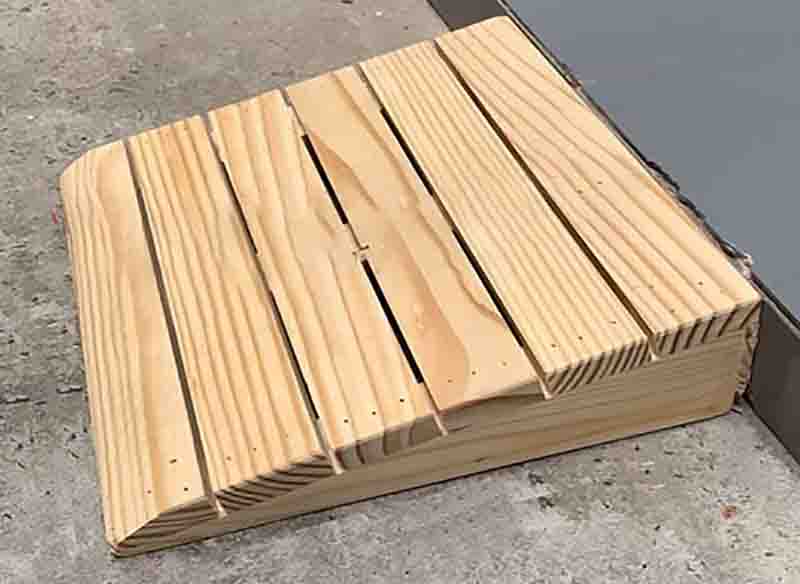
Jackwin – Your Partner in Custom Curb Solutions
At Jackwin, being a curb ramp manufacturer, we take extreme satisfaction in offering reliable, excellent slope curbs that are customized to meet your daily mobility requirements. Whether you are considering water controls, sloped carports, or uneven roads, our easy-to-use car and truck ramps provide a more sensible and safe choice.
Customized Curb Ramps for High Curbs
Our high curbs are made to support heavy loads and make it simple for cars to access walkways and higher areas.

Curb Ramps for Driveways & Garages
While keeping the bottom of your car safe, make sure you can get in and out of your home or business carport with ease. Make plans for sloping or taller carport edges.


Portable Car/Truck Curb Ramp
You have a way to raise and lower your vehicle or car with ease. Jackwin is a Supplier of Road Safety ramps that are ideal for both short-term and long-term applications since they are lightweight, portable, and simple to move, put up, and store.
Conclusion
Jackwin has the best curb layout available, especially for low-profile EVs and electric cars, among other modern vehicles. You can rely on us to deliver top-notch OEM Curb ramp items that are compatible with all systems. At Jackwin, we do not just build ramps; we establish trust. Whether you work in urban planning, have a mortgage, or are a contractor, selecting the right curb design and tools from a reliable Manufacturer and Supplier of Traffic Safety Products in China, like Jackwin, can make a big impact. Ready to upgrade your curb access? Contact us today for custom curb ramp solutions that fit your space and style.


-80x69.png)

